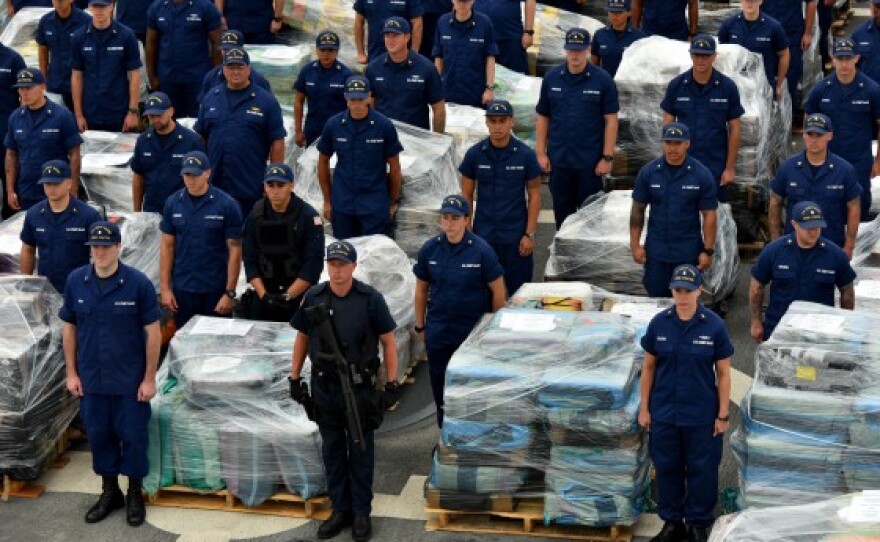U.S. Coast Guard personnel offloaded more than 33 tons of impounded cocaine at the San Diego Harbor waterfront Monday, a record take seized from seafaring traffickers over the last 10 months.
The bales of contraband carried into the bay by the USCG cutter Stratton was part of an overall 119,000 pounds of the illicit drug confiscated by U.S. and allied forces operating in the Eastern Pacific Ocean near Central and South America since last year, according to the federal maritime agency.
The combined haul carried an estimated total street value in excess of $1.8 billion.
The enforcement patrols also caught about 215 suspected smugglers, helping make fiscal 2015, which ends Sept. 30, already the most successful year in U.S. counter-drug operations in the Eastern Pacific since 2009, according to Adm. Paul Zukunft, commandant of the Coast Guard.
"This is about more than just trying to keep drugs off U.S. streets," Zukunft said. "The cultivation, trafficking and distribution of narcotics fuels violence and instability throughout the Western Hemisphere, (bringing) a path of destruction directly to the doorstep of the U.S."
Transnational organized crime groups vie for control of illicit trafficking routes and power in many Latin American countries, resulting in increased violence and instability, according to government officials. The underworld competition has led to record-high homicide rates in Central and South America, as well as in the Caribbean.
More than half the unaccompanied children who crossed the U.S. southern border last year had suffered or faced harm from organized crime groups, a hardship that qualified them for international protection.
"There is still work to be done," Zukunft told reporters. "We can only act on 30 percent of known drug shipments in the Eastern Pacific and Caribbean. We must increase already hard-earned momentum to curb the rising tide of crime, violence and instability in our hemisphere."
The amount of seized cocaine brought to San Diego this morning is equal to about 33 million doses of the drug, or 336 million hits of crack, according to U.S. Drug Enforcement Administration estimates.
The drug was seized in 23 separate actions by Coast Guard cutters and USCG law enforcement teams operating from U.S. Navy vessels in known drug transit zones around Central and South America.
During such interdictions in international waters, a suspect vessel is initially located and tracked by allied military or law enforcement aircraft or vessels. The actual boarding, search, seizures and arrests are conducted by Coast Guard personnel.
Allied and international partner agencies play a vital role in the operations, officials said.





